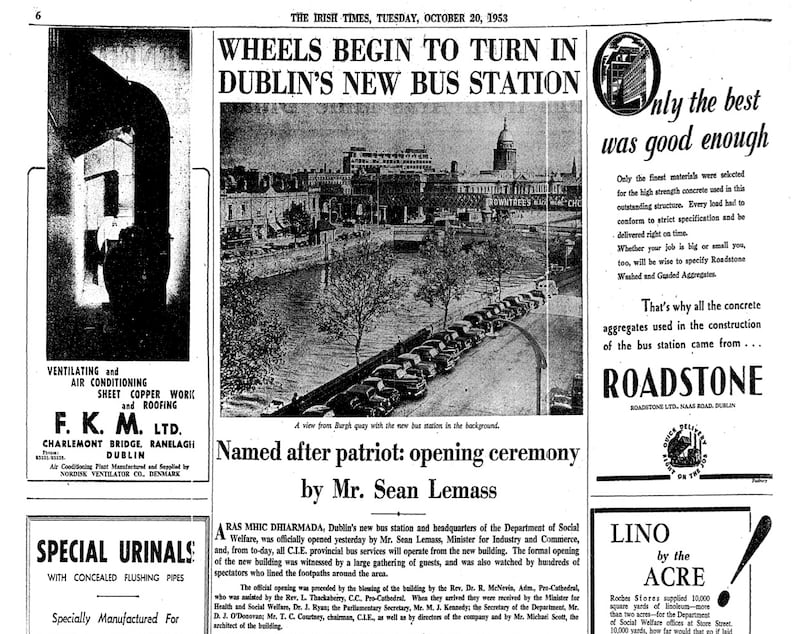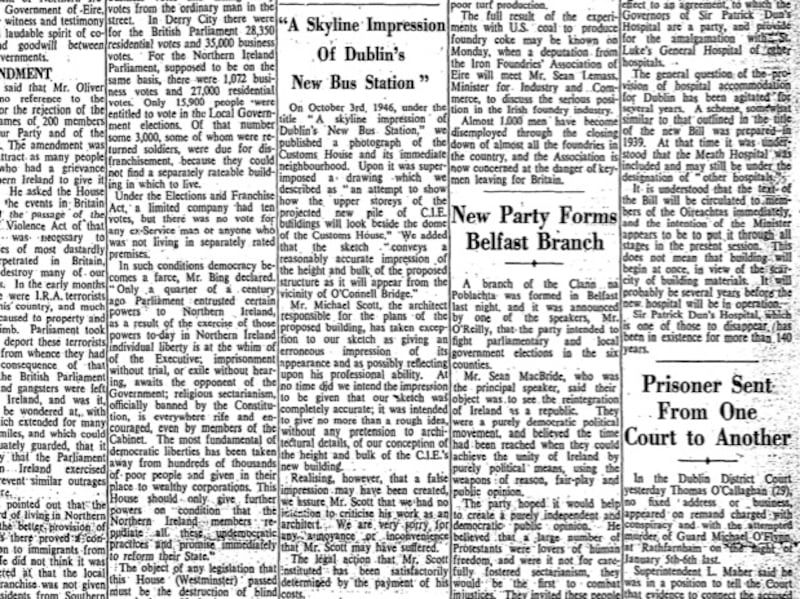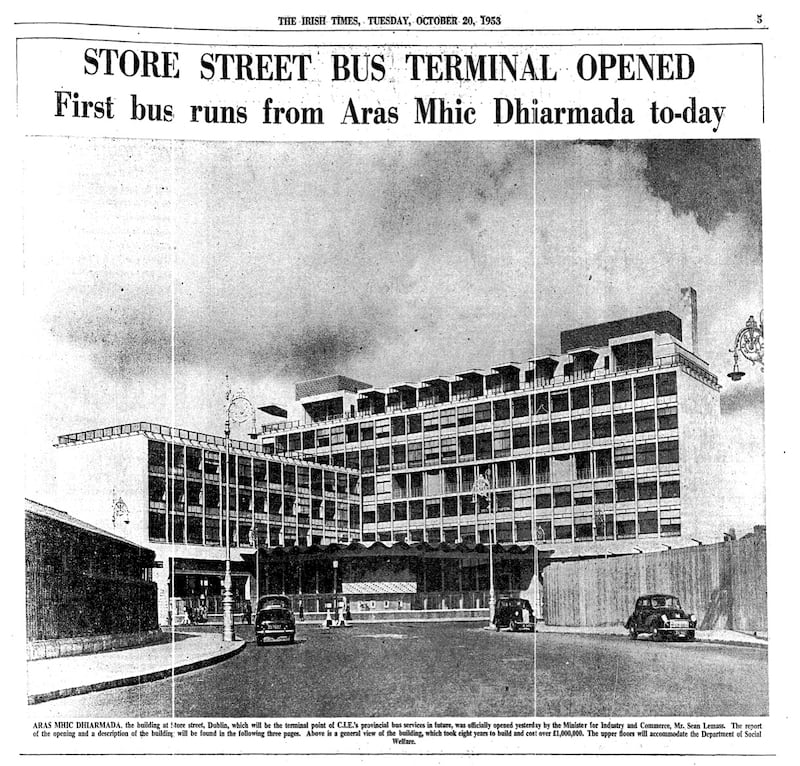More than 70 years ago, The Irish Times published an artist’s impression to illustrate the “bulk” of the “new pile” of a “factory-like” bus station that was planned for a site on Dublin’s Store Street.
The “sketch” the newspaper reported was a “reasonably accurate impression” of how the new CIÉ building, expected to cost a whopping £700,000, would appear beside the historic Custom House.
Its architect Micheal Scott did not agree. Eight months later, and following the initiation of legal proceedings by Mr Scott, the newspaper published an apology, saying it had not intended to give the impression that its sketch was “completely accurate” and it was “no more than a rough idea, without any pretention to architectural details, of our conception of the height and bulk of the CIÉ’s new building”.

That was in 1947. Fast forward to October 1953 and the opening of Aras Mhic Dhiarmada, now more commonly known as Busáras, and The Irish Times had become the bus station’s biggest cheerleader.
Mr Scott’s “fabulous” building, which had ended up costing £1,014,000, was “both internally and externally a magnificent structure”. Walking through the entrance to its pillars clad with Venetian glass mosaics and “remarkable” wood panelling the “impressionable” traveller may “wonder whether you are in a bus station at all”.

The writer did note that some had referred to it as a “white elephant " but others considered it “one of the finest pieces of modern Irish architecture” which “stands today as a great achievement in both perseverance and planning”. It had the writer concluded “been built to last for many generations”.
The writer was right on this last point at least, on its 70th anniversary Busáras caters for more than a million passengers a year. “Busáras continues to operate exactly as it was intended to do,” Stephen Kent, Bus Éireann chief executive, said. “It keeps the nation moving every day. Last month we carried more passengers than we ever did in our history.”
He said the building was conceived and constructed just as Europe was emerging from the second World War and was considered a significant achievement not only in Ireland but internationally.

“Busáras was very famous internationally because it became Europe’s first post-war office building, That is why it came in for a lot of international recognition and won the Royal Institute of the Architects of Ireland gold medal in 1955. People were full of admiration. Busaras is arguably the greatest Irish building of the 20th century. For me it’s a real jewel but it’s a jewel that needs to be polished.”
Architect Niall Scott, son of Michael Scott, said his father “had an absolute passion about modern architecture” and a “missionary zeal”. He said Busáras had stood the test of time. “In my mind it gets better with age.”














